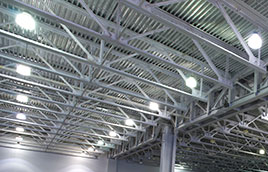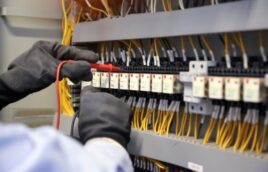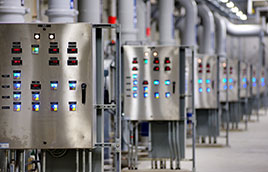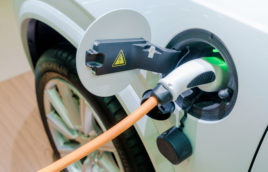Does Seahurst install NEMA 14-50 receptacles for EV chargers?
The short answer is that we do not recommend the installation of NEMA 14-50s.
A brief history
The electrical industry has been using the NEMA 14-50 spec outlet for electrical purposes for many decades. When Electric Vehicles (EVs) were introduced, the NEMA 14-50 was commonly used for “shore power” for larger recreational vehicles. Since these were outlets located outside homes and at RV parks, this was and is a simple way to charge EVs. These receptacles were not designed for heavy use for many hours, and some of the insulators can melt or otherwise fail after a few months. An industrial receptacle would last a few years, but add significantly to the cost.
Ground Fault Circuit Interrupter (GFCI) Breaker Requirement
Washington state currently follows the National Electrical Code published in 2023. Effective January 1st, 2019, the code was updated to include GFCI protection for all 240v outlets, including the NEMA 14-50 and NEMA 6-50 outlets (See here May 2019 and here, page 2). This can add over $100 to the cost of the breaker for this feature. Washington State adopted this as law in 2020.
Manufacturer’s Recommendations and Requirements
Most modern Electric Vehicle Supply Equipment (EVSE), or EV chargers, have built-in GFCI protection. When the unit is hardwired, there is no need for a GFCI breaker. If the unit is installed with a plug with a GFCI breaker, there can and will be faulty trips. The sensitivity of the breaker is higher than the EV charger, and the power draw from an EV charger can trip the breaker. Most EV Charger manufacturers (Tesla, ChargePoint, Bosch, Enel-x’s Juicebox, and more) state that the EV Chargers should not be installed onto circuits with GFCI protection. Click here for an official Tesla Response.
There are some manufacturers who have adapted to the GFCI nuisance tripping issue (e.g. GM, Porsche), and are building mobile chargers that are less likely to nuisance trip. Because of this, we have started to offer the installation of NEMA 14-50s again, with the caveat that hardwired chargers are simply better in every way, and will provide a better, more reliable charging experience.
What this means
In addition to being frustrating, these faulty trips can lead to damage of the breaker and charger over time. The breakers would either become more sensitive causing more trips or less sensitive which could cause the breaker not to trip at all.
In short, due to being overall safer and more customer-friendly, we will only recommend the installation of EV Chargers that are hardwired.
Here’s a brief list of the benefits of direct wiring:
- Fewer Issues
- Lower Cost (both initial and long term)
- Less Maintenance
- Safer
- Cleaner Looking install
- Follows many manufacturer instructions and requirements
- Follows Code:
2020 NEC 210.8(A)(2)&(3) and 625.54,
2017 NEC 625.54, TIA 17-2
WAC 296-46B-010
Please note, some cities are slow to adopt NEC code updates, but for customer safety, Seahurst will follow the current NEC and Washington State law.
To get a quote to install your EV Charger, please click here!



